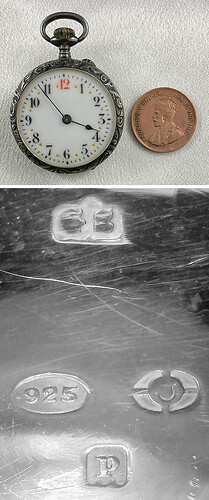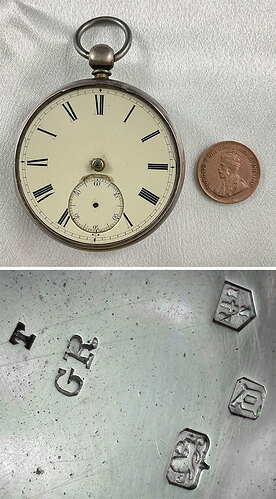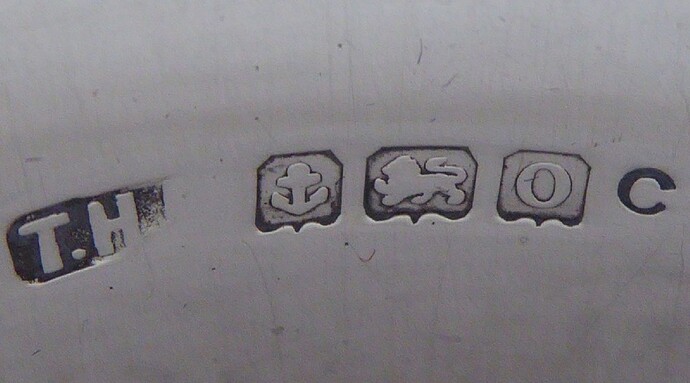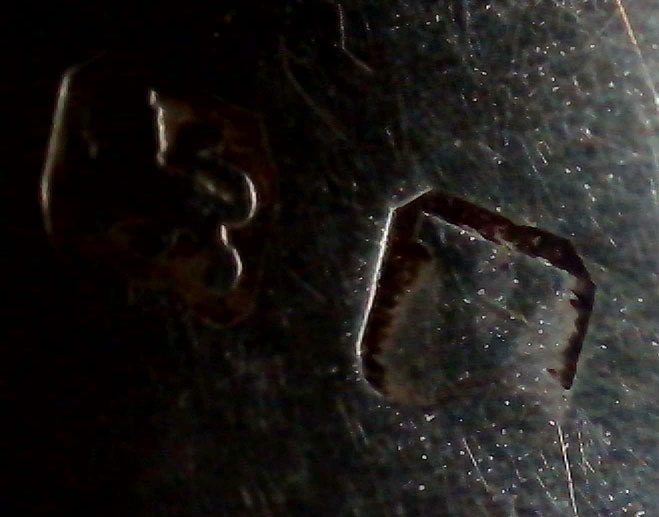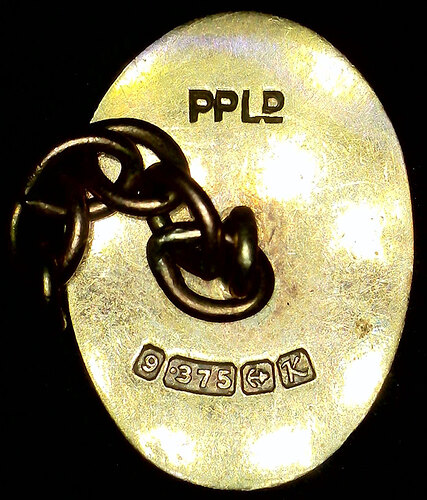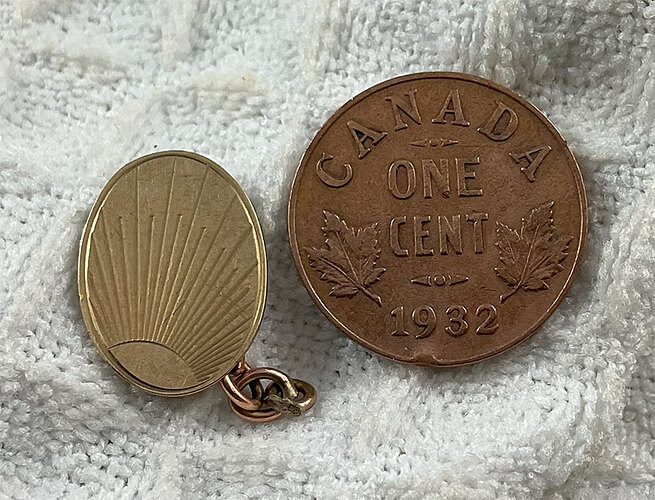Swiss… gotcha.
Another watch with no name on the dial. This time the mechanism is actually branded, as Medana, and marked made in Switzerland.
If I’m reading things correctly, it has a 1910 import duty mark for London. Is the mark at the top, what looks like GS, the company that imported it?
George Reader, Chester, 1867.
GS is George Stockwell whose only business appears to have been importation.
The date mark on a creamer is badly worn, leaving only the surround to date it between 1900-1949.
Could the maker be T. H. Hazlewood & Co.? The “C” looks like it’s not part of the maker’s mark.
Definitely a Hazelwood mark. The C may be a journeyman’s mark. It’s certainly not part of either the maker’s mark or the hallmark.
Searching online, I found another piece by T. H. Hazlewood marked with a “C,” dated 1938. So if that letter is a journeyman’s mark, I can probably date it more accurately. I also found a few other pieces with “A” and “O,” so it wasn’t uncommon for the company to include a journeyman’s mark.
How long would an apprenticeship typically last? I could probably date the creamer within those years.
Complicating the detective work, the dealer dates this as 1938, whereas it could be 1913. But more than likely 1938.
This one in my reading is 1938.
It’s definitely 1913 as Hazlewoods went out of business around 1923 - they have an entry in the 1923 telephone directory, but not in the following year.
Although we call these strange additional marks “journeymen’s marks” they are simply a means of identifying the person who should be paid for producing the item in the factory. As such they would just be the skilled workshop operatives who would probably remain employees for their whole working lives.
It is equally possible of course that there is another explanation for these mysterious letters…
Always interesting, Phil.
I went back to the camera to try again to no avail. Then I returned later to find that if the creamer was placed at a VERY SPECIFIC angle, with less powerful illumination, the date mark (1920) would reveal itself!
Even the slightest variation of angle made the mark unreadable.
A crucifix by Able & Charnell, Birmingham, 1881. Do I have this correct? The ‘g’ is different and predates when the company was in business (1889-1915).
Able & Charnell, but the date is 1906. The 1881 “g” is in a different typeface and gold marks do not follow the same pattern as silver hallmarks so the sideways anchor is not indicative of a pre-1900 date.
What about this one, Phil?
Payton, Pepper & Sons Ltd., Birmingham.
Also, what is the item called?
BIrmingham 1984 and I agree: Payton, Pepper. It looks like half of a pair of cufflinks to me.
